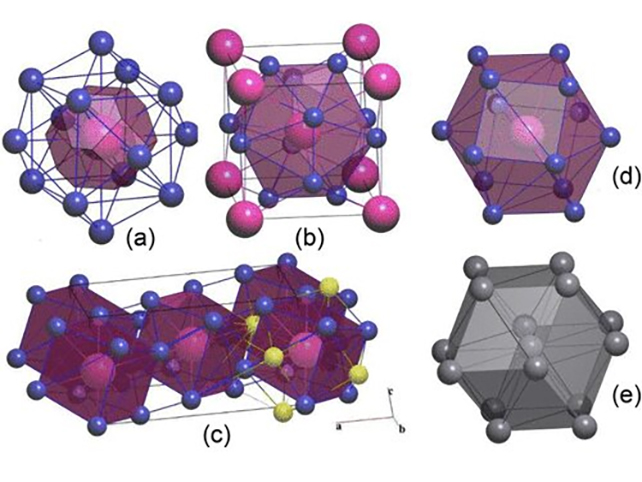Ultra-high pressure can have strange effects in physics and chemistry, and in a new study, high-pressure modeling has led to the prediction of four new compounds: compounds that don't form in normal ways, have crystal structures we've never seen before, and can even act as superconductors in certain temperatures.
Those compounds are Li14Cs, Li8Cs, Li7Cs, and Li6Cs, and they're all formed from lithium (Li) and cesium (Cs) – though not in a conventional way. All four are superconductors, which means electricity can flow through them without resistance or energy loss.
The scientists behind the study used a special crystal structure prediction algorithm called USPEX (Universal Structure Predictor: Evolutionary Xtallography) to find these new compounds. It's known as an evolutionary algorithm, using a range of methods to figure out the probability of how atoms will link together.

In this case, USPEX was used to analyze how high pressure might affect electronegativity, which is how strongly the atoms in a chemical element attract and hold onto electrons.
It turns out that it makes a big difference.
"Under normal conditions, if anything we would expect lithium to attract the electrons of cesium, which is the most electropositive element in the periodic table as most people know it: It is supposed to give up electrons, period," says materials scientist Artem Oganov from the Skolkovo Institute of Science and Technology in Russia.
"Yet under pressure it is the other way around. Cesium grabs the electrons of lithium, and this highly unusual chemical behavior leads to the formation of the four new compounds."
Two of those compounds, Li14Cs and Li6Cs, have crystal structures that haven't been seen before. That's rare in compounds that are only made up of two elements, making this discovery even more unexpected and notable.
As for superconductivity, these compounds would become superconductors between temperatures of around minus 223 °C to minus 213 °C (minus 369.4 °F to minus 351.4 °F), the researchers predict.
That could make them useful for ultra-fast microchips to ultra-efficient power grid materials, if we can figure out how to practically build superconductors out of these newly discovered compounds.
"Sure, from a technological standpoint, these critical temperatures are no good compared with what we've seen in polyhydrides – the hydrogen-rich compounds of some metals," says Oganov.
"Yet this study deepens our understanding of lithium chemistry, and lithium as such could be interesting for superconductivity, perhaps in the form of a hypothetical lithide compound – so far we don't know if it exists or how to spell it."
Intermetallic compounds like these are useful in a variety of situations, especially where high strength and resistance to high temperatures are required. They can also offer particular properties not found in the elements they're made up of.
While these new compounds are only predicted for now, they do open up new areas for scientists to explore in the future – and predicting them in advance means we can more quickly identify the materials that are going to be most useful.
"Once the crystal structure of a chemical substance is known, many properties can be predicted reliably and routinely," Oganov and his colleagues wrote in an earlier paper published in Accounts of Chemical Research.
"Therefore if researchers could predict the crystal structure of a material before it is synthesized, they could significantly accelerate the discovery of new materials."
The research has been published in Nano Letters.
